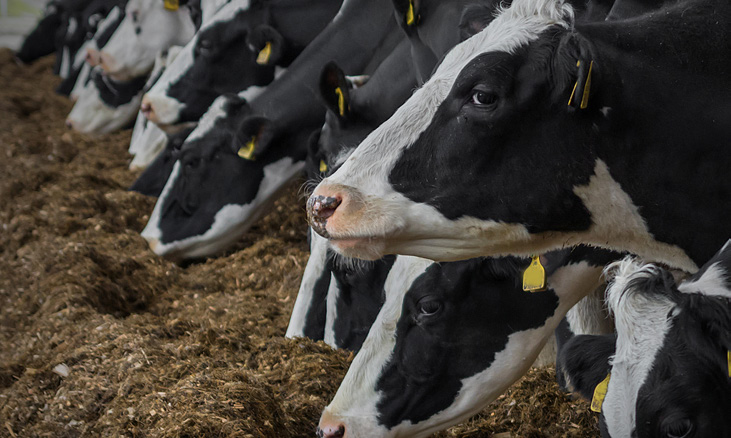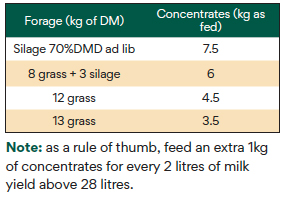 With the spring calving campaign well underway, dairy farms can be very busy places. With so much work to do, it’s very easy to become immersed in calving and keeping animals healthy and alive that sometimes the diet of the cow can be neglected. The issue here is that by the time the cow has calved, her milk yield and fertility for the year has already been determined. Peak yield occurs 6-8 weeks post calving, however peak intake doesn’t occur until 12 weeks, resulting in an unavoidable energy gap. It’s the cows with the highest genetic potential to milk well that will continue to lose weight for the longest period. This is why the highest yielders are often the last to go back in calf.
With the spring calving campaign well underway, dairy farms can be very busy places. With so much work to do, it’s very easy to become immersed in calving and keeping animals healthy and alive that sometimes the diet of the cow can be neglected. The issue here is that by the time the cow has calved, her milk yield and fertility for the year has already been determined. Peak yield occurs 6-8 weeks post calving, however peak intake doesn’t occur until 12 weeks, resulting in an unavoidable energy gap. It’s the cows with the highest genetic potential to milk well that will continue to lose weight for the longest period. This is why the highest yielders are often the last to go back in calf.
MAXIMISING INTAKE
Minimising this weight loss and hitting a high peak lactation yield is crucially important in achieving high submission rates and high lactation yields. Where weight loss exceeds 0.5 BCS, 3-week submission rates can drop as low as 40%. The key to maximising intake as quickly as possible is avoiding digestive upsets, namely acidosis and sub-acute rumen acidosis (SARA). Dry cows are usually fed consistent TMR rations containing straw, minerals and meal. Then when they calf down they are turned straight out to grass. This early grass diet contains less effective fibre, is lower in dry matter and offers a poor supply of quality protein. Early grass is also centred on one or two big feeds, especially when on off grazing is necessary. These conditions are conductive to fluctuations in rumen pH (acidosis) and suppressed intakes. An appropriate transition period to grass will reduce the incidence of issues like acidosis and displaced abomasum but it does create extra workload. If possible, leave cows in for the first 10 days post calving and slowly introduce concentrates. The tried and tested out by day in by night is a very cow friendly way of introducing grass. Concentrates need to be very specific to this freshly calved cow. Drummonds dairy rations contain an ideal balance of starch and soluble fibres that provide rapid energy for protein production in the rumen and slow-release energy for rumen health.
PROTEIN
Protein is critical in early lactation as cows are mobilising body fat but their ability to mobilise body protein is quite limited. An overall dietary protein of 17-19% is recommended, of which 30-35% of this should be ruminally undegraded. The inclusion of soya in our ration ensures a supply of quality ruminally undegraded protein. Protein always drives milk and is an appetite stimulant so it’s advised to feed an 18-20% ration in early lactation.


